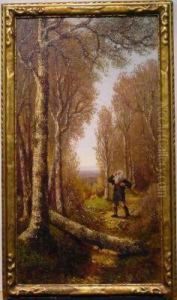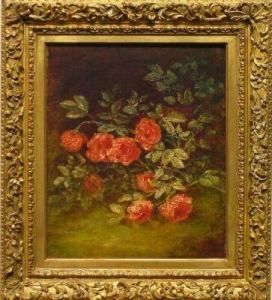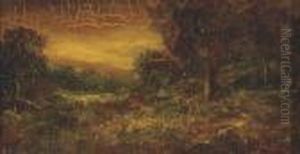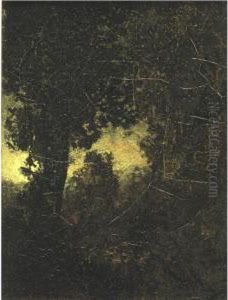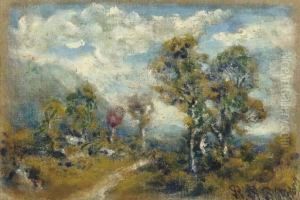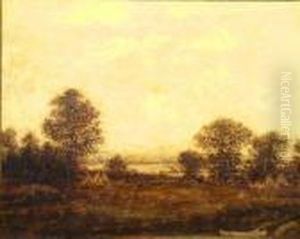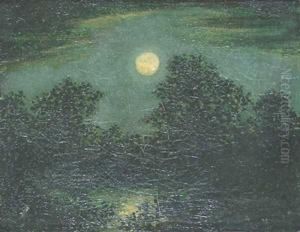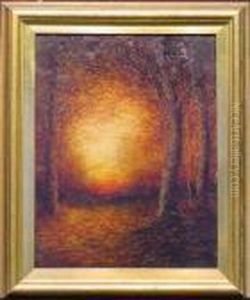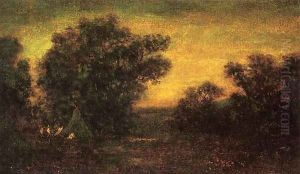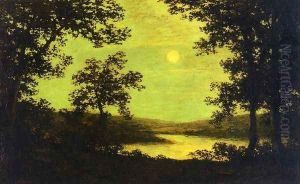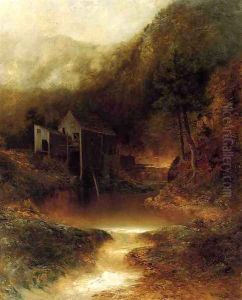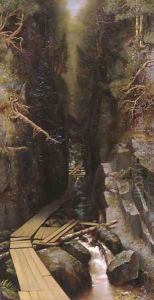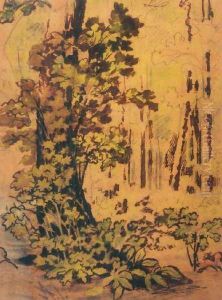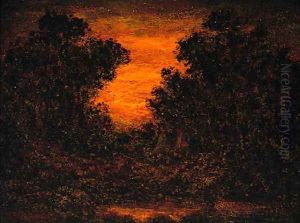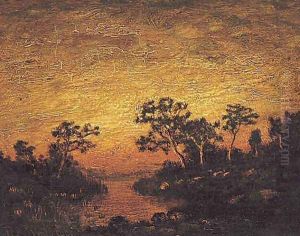Ralph Albert Blakelock Paintings
Ralph Albert Blakelock was an American painter known for his visionary landscapes with a focus on the effects of light and shadow. He was born on October 15, 1847, in New York City to a physician father. Despite initially studying medicine, Blakelock ultimately abandoned this pursuit to follow his passion for art. He was largely self-taught, although he did spend some brief periods at the Free Academy (now the City College of New York) and the National Academy of Design.
Blakelock's early work was influenced by the Hudson River School, but he soon developed his own distinctive style characterized by richly textured canvases and a moody, atmospheric quality. He often depicted twilight and nighttime scenes imbued with a strong sense of mysticism and solitude. His unconventional techniques, which included the application of layers of paint to achieve depth and luminosity, were ahead of his time and prefigured some aspects of modernism.
The artist undertook several trips to the American West in the 1870s, which had a profound impact on his work. He was inspired by the landscapes he encountered, particularly the vast open spaces and the indigenous communities he visited. These experiences informed some of his most famous paintings, such as 'Moonlight' and 'Indian Encampment.'
Despite his unique talent, Blakelock struggled financially throughout his life, and his mental health deteriorated. He was committed to the Middletown State Homeopathic Hospital in New York in 1899, where he spent almost two decades. During his time in the asylum, he continued to create art, often using whatever materials he could find.
Recognition for Blakelock's work came late in his life, and it was only after his paintings began to sell for significant sums that efforts were made to improve his living conditions. He was eventually released from the asylum in 1916 and spent his remaining years under the care of his family. Ralph Albert Blakelock died on August 9, 1919. His legacy as a pioneer in American art was solidified posthumously, and today his works are held in major museums and collections across the country.

